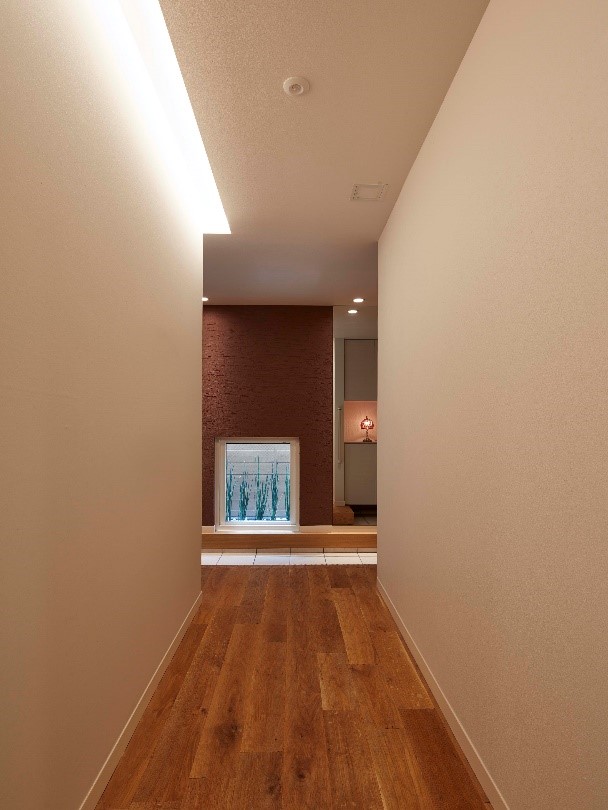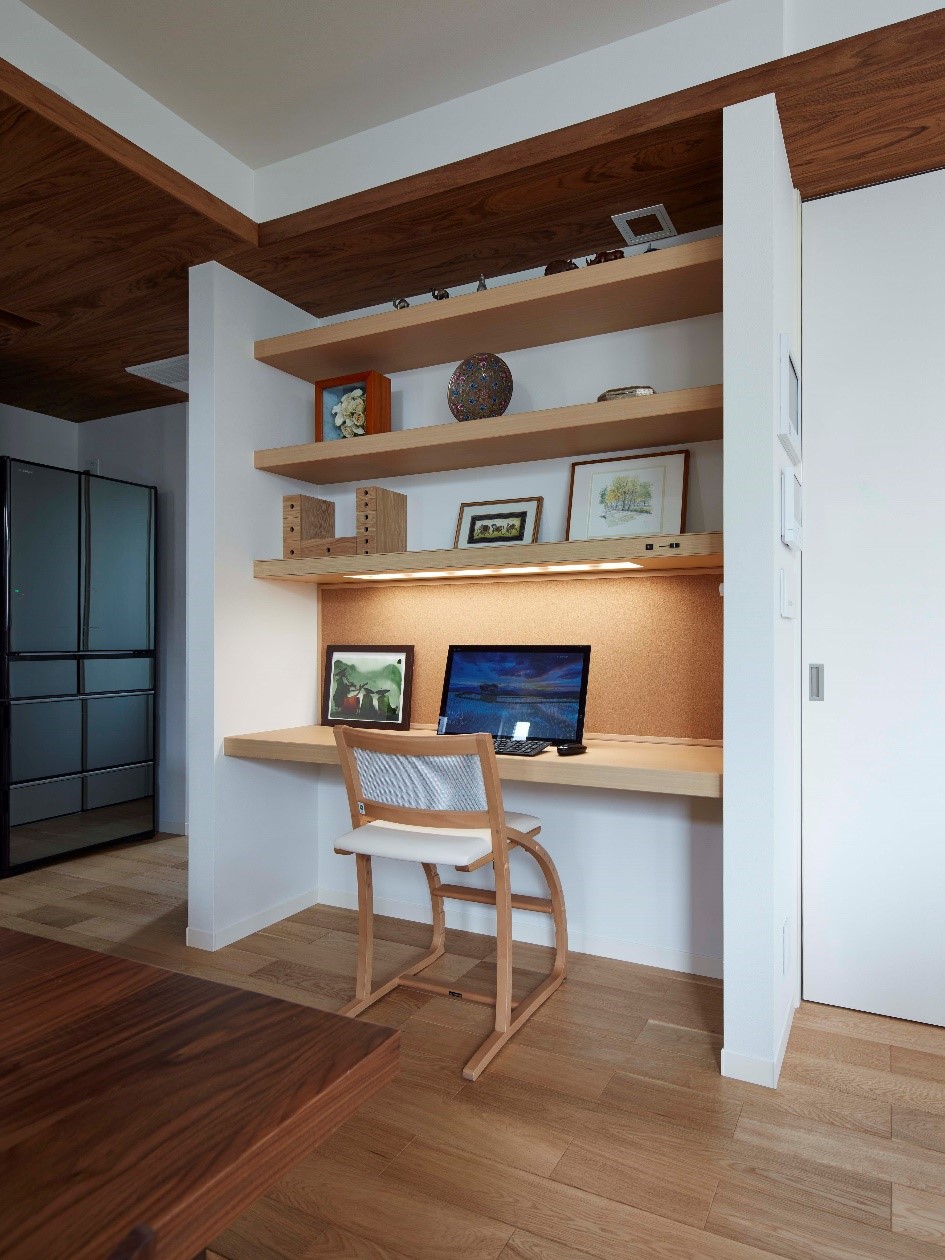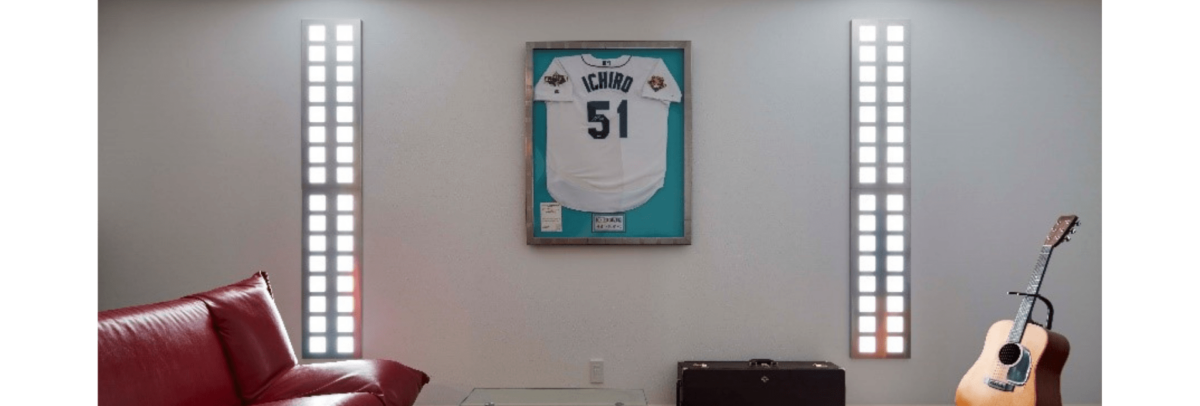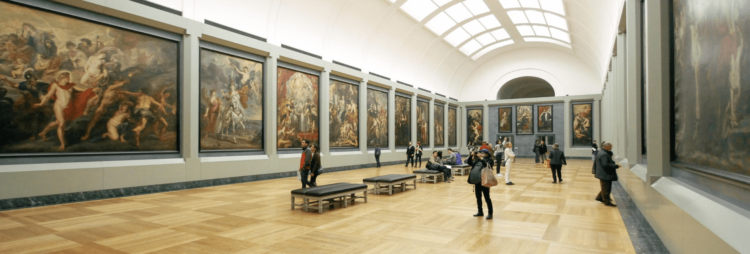![[Interview] OLED Light’s Human-centric Lighting Qualities Discussed in ‘Printed Electronics Now’](https://www.oledworks.com/wp-content/uploads/2019/07/Printed-Electronics-Now-750x254.png)
Mariko Nakabe, owner of Taiyo Corporation, about lighting in her home and tricking a six-year-old with OLED lighting.
You have the Synqroa hybrid light at home above your dining table. How does it feel sitting below it?
It reminds me that Taiyo Corporation, which I represent, has positioned OLED as a new business field, and that, on a more personal note, I have advanced the design of my home. The overlapping timing of these two things gave birth to what is probably the world’s first home based on the concept of OLED lighting, which goes beyond the idea of just introducing OLED as parts of lighting devices. As we handled OLED lighting in our business, we naturally wanted to gather evidence about it. But more than that, as a mother of young children, I saw the importance of providing the best light possible for them.
Initially, we wanted to use OLED for all the lighting in the home, but different light sources are suited to different applications. But there were some places that brought out the characteristics of OLED light better, by combining conventional lighting with OLED lighting. For example, in the dining room, we took the idea of hybrid lighting – using conventional light with future light – to produce a beautiful pendant light that combines halogen bulbs with OLED lighting. People can use OLED lighting at mealtimes to enhance the colors of their food, and later on, they can switch to the halogen bulbs, which are better suited to relaxing in the evening and getting ready to go to bed. That made it possible to use the right lighting for each home life situation in an unprecedented way.
We introduced OLED under the “Home with the OLED lighting concept” in the following areas:
- Ceiling lights in bedrooms and basement rooms
- Cubic lights in staircase spaces
- Dining room lighting (hybrid lighting, combining halogen bulbs with OLEDs)
- Working lights built into student desks
- Cosmetic lights embedded around the mirrors of washbasin stands
- Lights with combined indirect lighting embedded around the restroom mirrors – Display cabinets for glass – Mock window lighting for a basement
- One-touch, waterproofed lighting for a kitchen workbench (to be introduced)

OLEDs lighting the hallway of the home
When did you become acquainted with OLEDs? What were your initial thoughts? How has this changed?
Taiyo Corporation was originally a specialist trading company that was strong in medical devices, so we focused on gentle OLED lighting in the medical field from an early stage. But when we first saw OLED lighting panels, our impression was that their brightness might be inadequate for use as home lighting. In planning light fixtures for my home, I was concerned about that point but when I actually tried living with it, it felt brighter than I had expected. Being able to build up that kind of knowledge in a real living space is a major advantage in product development.
Everyone who visits our house is amazed by the light from the mock window in the basement. One characteristic of OLED lighting is that it has the same spectral properties as sunlight, so lighting made to resemble a window below ground can reproduce the feeling of brightness of the midday sun. There was a six-year-old kid among the visitors, and when he went into the basement at 7 pm he confused the lighting for sunlight, blurting out “is it daytime now?“
When the specialist photographer from a house manufacturer photographed the basement, he was very interested in the odd feeling of setting the light to the same state as outdoor sunlight while underground. Experiencing this kind of impression for myself, of bringing sunlight to the enclosed atmosphere peculiar to basements, gave me a new feeling for the potential of OLED.
What has selling OLED luminaires to do with your main business of exporting medical devices?
OLED lighting that is close to sunlight has excellent color rendition, without the risks associated with blue light, so it is suitable for medical workplaces that demand accurate work and diagnoses. As a gentle light for people, we expect to see OLED lighting used in various product applications including those in medical care. Therefore, we have been working in partnership with Synqroa on everything from product planning to the development and overseas sales of medical OLED lighting.
During this process we came to the conclusion that people needed gentle light in their homes. The first step, which we undertook with the house manufacturer Misawa Homes Co. Ltd., was the project of implementing OLED lighting in our own home. The participating OLED panel manufacturers were OLEDWorks, Lumiotec Inc., and the Pioneer Corporation (now in the process of product design). Synqroa is handling the optical design and product design of the OLED panels. And our home is the client. In the future, Taiyo Corporation will play a part in spreading OLED lighting around the world. By bringing together major panel manufacturers, we have been able to create products that make the most of the features of each type of panel. We will be able to verify the effects in our home.

Embedded OLEDs illuminate a desk
What do you see for the future of OLEDs?
There is a worldwide movement to end the manufacture of incandescent and fluorescent lights. At the moment, the only other option is LED as a main light source. But in line with the approach of the right lighting in the right place that I mentioned earlier, I believe that OLED, which has many appealing aspects that differ from LED, merits consideration as another light source option.
Our position here is one of putting forward new concepts in the OLED lighting field to contribute in any way we can to the wider use of this gentle light source for people. I would be delighted if this example of introducing OLED in the home helps bring people closer to OLED lighting.
Headquartered in Tokyo, Japan, the Taiyo Corporation specializes in the export of medical equipment such as CT and MRI systems manufactured by Toshiba Medical Systems (now Canon). Their main client base is located in the Near and Middle East and North Africa. Mariko Nakabe‘s father founded the company in 1981. In 2014, Mariko took over as president of the company and moved the company into a new phase. Taiyo is moving into new areas of business activity including light planning and product design.


![[eBook] How OLED is Healthy Light for Our Well-Being](https://www.oledworks.com/wp-content/uploads/2020/08/top-banner-image-blog-page-healthy-ebook-750x254.webp)
